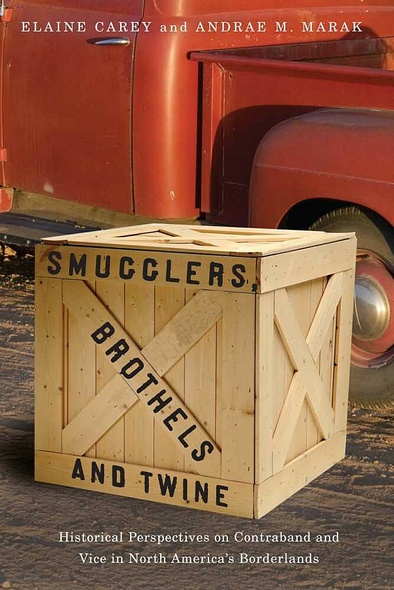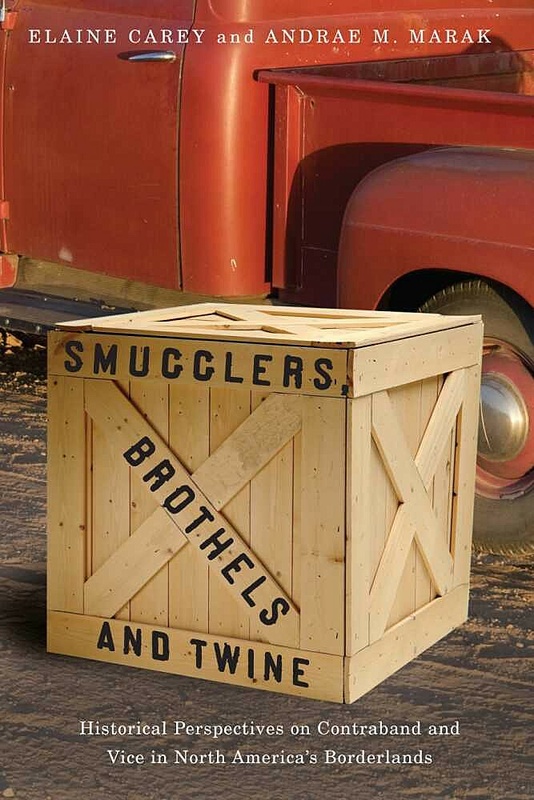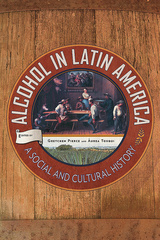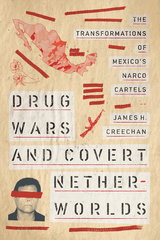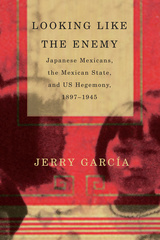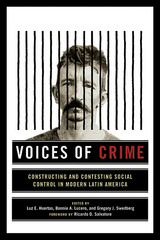Our shopping cart is currently down. To place an order, please contact our distributor, UTP Distribution, directly at utpbooks@utpress.utoronto.ca.
Smugglers, Brothels, and Twine
Historical Perspectives on Contraband and Vice in North America’s Borderlands
Edited by Elaine Carey and Andrae M. Marak
The University of Arizona Press
In this volume the borders of North America serve as central locations for examining the consequences of globalization as it intersects with hegemonic spaces and ideas, national territorialism, and opportunities for—or restrictions on—mobility. The authors of the essays in this collection warn against falling victim to the myth of nation-states engaging in a valiant struggle against transnational flows of crime and vice. They take a long historical perspective, from Mesoamerican counterfeits of cacao beans used as currency to cattle rustling to human trafficking; from Canada’s and Mexico’s different approaches to the illegality of liquor in the United States during Prohibition to contemporary case studies of the transnational movement of people, crime, narcotics, vice, and even ideas.
By studying the historical flows of contraband and vice across North American borders, the contributors seek to bring a greater understanding of borderlanders, the actual agents of historical change who often remain on the periphery of most historical analyses that focus on the state or on policy.
To examine the political, economic, and social shifts resulting from the transnational movement of goods, people, and ideas, these contributions employ the analytical categories of race, class, modernity, and gender that underlie this evolution. Chapters focus on the ways power relations created opportunities for engaging in “deviance,” thus questioning the constructs of economic reality versus concepts of criminal behavior. Looking through the lens of transnational flows of contraband and vice, the authors develop a new understanding of nation, immigration, modernization, globalization, consumer society, and border culture.
By studying the historical flows of contraband and vice across North American borders, the contributors seek to bring a greater understanding of borderlanders, the actual agents of historical change who often remain on the periphery of most historical analyses that focus on the state or on policy.
To examine the political, economic, and social shifts resulting from the transnational movement of goods, people, and ideas, these contributions employ the analytical categories of race, class, modernity, and gender that underlie this evolution. Chapters focus on the ways power relations created opportunities for engaging in “deviance,” thus questioning the constructs of economic reality versus concepts of criminal behavior. Looking through the lens of transnational flows of contraband and vice, the authors develop a new understanding of nation, immigration, modernization, globalization, consumer society, and border culture.
Elaine Carey is an associate professor of history at St. John’s University in Queens, New York, and the Lloyd Sealy Research Fellow at CUNY’s John Jay College of Criminal Justice. She is the author of Plaza of Sacrifices: Gender, Power, and Terror in 1968 Mexico. Andrae M. Marak is chair of the History and Political Science Department at California University of Pennsylvania and an associate of the Center for Latin American Studies at the University of Pittsburgh. He is the author of From Many, One: Indians, Peasants, Borders, and Education in Callista, Mexico, 1924–1935.
Introduction
Part I Establishing Borders
1 Chinese Immigrant Smuggling to the United States via Mexico and Cuba, 1882–1916
Robert Chao Romero
2 Cree Contraband or Contraband Crees? Early Montanan Experiences with Transnational Natives and the Formation of Lasting Prejudice, 1880–1885
Brenden Rensink
3 Contraband Twine: Harvests, Smuggling, and Tariffs in the US-Canada Borderlands in the Early Twentieth Century
Sterling Evans
4 Twilight of the Tequileros: Prohibition-Era Smuggling in the South Texas Borderlands, 1919–1933
George T. Díaz
Part II Consolidating National Space
5 Detroit’s Border Brothel: Sex Tourism in Windsor, Ontario, 1945–1960
Holly Karibo
6 Official Government Discourses about Vice and Deviance: The Early-Twentieth-Century
Tohono O’odham
Andrae Marak and Laura Tuennerman
7 Crossing the Line: Transnational Drinking and the Biopolitics of Liquor Regulation in Ontario, 1927–1944
Dan Malleck
8 Selling Is More of a Habit than Using: Narcotraficante Lola la Chata and Her Threat to Civilization, 1930–1960
Elaine Carey
9 Preventing the Invasion: LSD Use in Canada during the Sixties
Marcel Martel
Afterword: Crime on and across Borders
Josiah McC. Heyman and Howard Campbell
Notes
About the Contributors
Index

